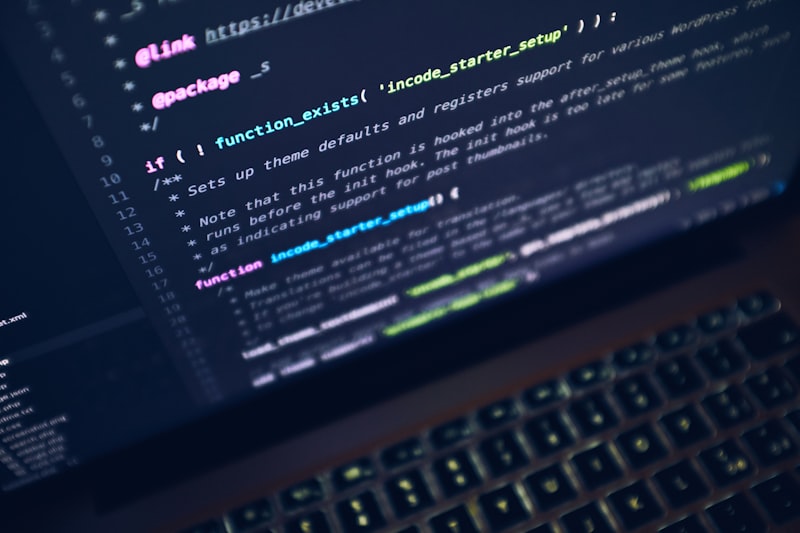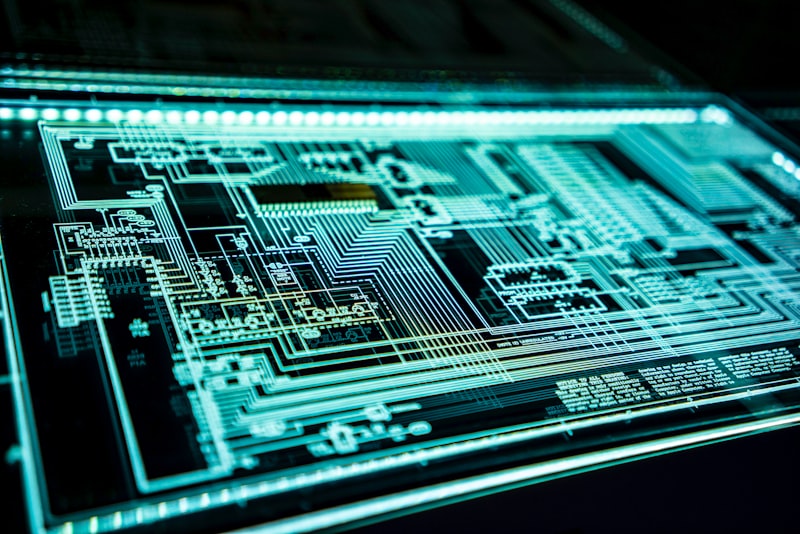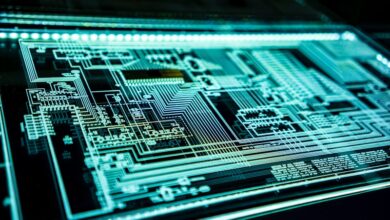Public Safety and Surveillance Technologies

Introduction:
Imagine a world where public safety is paramount, and communities thrive in a secure environment. Thanks to the rapid advancements in surveillance technologies, this vision is becoming a reality. From bustling city centers to quiet suburban neighborhoods, the integration of these cutting-edge tools has revolutionized the way we protect and safeguard our society.

The Role of Surveillance Technologies:
In the pursuit of public safety, surveillance technologies play a pivotal role. These innovative systems enable law enforcement agencies to monitor public spaces, deter criminal activities, and swiftly respond to incidents. By capturing real-time footage and collecting data, these technologies offer valuable insights for effective decision-making, improving emergency response times, and enhancing overall security measures.
CCTV Systems:
One of the most widely used surveillance technologies is Closed-Circuit Television (CCTV) systems. These camera networks act as vigilant watchmen, tirelessly observing public areas round-the-clock. With their high-resolution imagery and advanced analytics, CCTV systems provide authorities with essential visual evidence, aiding investigations and ensuring a safer environment for citizens.
Intelligent Video Analytics:
To further leverage the power of surveillance, intelligent video analytics have emerged as a game-changer. By harnessing the capabilities of artificial intelligence, these systems can automatically analyze vast amounts of video data in real-time. Intrusion detection, facial recognition, and license plate recognition are just a few examples of how these technologies enhance public safety by quickly identifying potential threats and enabling proactive measures.
Smart Sensors and IoT Integration:
The Internet of Things (IoT) has paved the way for the integration of smart sensors into our urban landscapes. These small yet powerful devices allow for continuous monitoring of various parameters such as air quality, sound levels, and even unusual movements. By connecting these sensors to a centralized surveillance system, authorities can detect anomalies, promptly respond to emergencies, and implement targeted safety measures.
Privacy Considerations:
While the benefits of surveillance technologies are undeniable, it is crucial to strike a balance between public safety and individual privacy. Stricter regulations and ethical guidelines are needed to ensure that these technologies are used responsibly and transparently. Safeguarding personal data and providing clear justifications for surveillance activities are essential aspects that must be upheld.
Conclusion:
Public safety and surveillance technologies go hand in hand in our modern society. From CCTV systems to intelligent video analytics and smart sensors, these innovative tools empower law enforcement agencies to protect communities effectively. By embracing the potential of these advancements while respecting privacy concerns, we can create safer environments where individuals can thrive without compromising their freedoms.
Revolutionizing Public Safety: How Surveillance Technologies Are Transforming Crime Prevention
Introduction:
In today’s fast-paced world, ensuring public safety is a paramount concern for communities worldwide. The evolution of surveillance technologies has brought about a paradigm shift in crime prevention strategies. By harnessing the power of advanced monitoring systems, law enforcement agencies are making significant strides in combating criminal activities. This article explores how surveillance technologies are revolutionizing public safety and transforming the landscape of crime prevention.
Enhanced Situational Awareness:
Surveillance technologies provide law enforcement with invaluable tools to enhance situational awareness. Closed-circuit television (CCTV) cameras strategically placed in public spaces act as vigilant eyes that never sleep. These cameras capture real-time footage, offering a comprehensive view of potential threats and criminal activities. With instant access to video feeds, law enforcement can respond promptly, deterring criminals and minimizing the risks associated with criminal behavior.
Preventing and Solving Crimes:
Surveillance technologies have proven to be instrumental in preventing and solving crimes. High-resolution cameras equipped with facial recognition technology enable authorities to identify individuals involved in criminal activities quickly. By cross-referencing captured footage with databases of known offenders, law enforcement can apprehend suspects swiftly, leading to increased conviction rates and a safer society.

Community Engagement and Deterrence:
The presence of surveillance technologies fosters a sense of security within communities. When people know they are being monitored, potential criminals are deterred from engaging in illegal activities. This proactive approach to crime prevention helps create an environment where residents feel safer, which, in turn, encourages community engagement. By working together, law enforcement and communities can build stronger partnerships and develop effective crime prevention strategies.
Efficient Resource Allocation:
Surveillance technologies optimize resource allocation for law enforcement agencies. Instead of deploying officers at every corner, limited resources can be strategically assigned based on real-time data and analysis provided by surveillance systems. This targeted approach allows law enforcement to allocate resources more efficiently, focusing on areas with higher crime rates or potential threats.
Privacy and Ethical Considerations:
While the benefits of surveillance technologies are undeniable, it is essential to address privacy and ethical concerns. Striking a balance between public safety and individual privacy is crucial. Implementing strict regulations, ensuring transparent practices, and maintaining compliance with privacy laws are imperative to avoid abuse or misuse of surveillance technologies.
Conclusion:
As technology advances, surveillance systems continue to play a pivotal role in revolutionizing public safety and transforming crime prevention. By harnessing the power of these technologies, law enforcement agencies can enhance situational awareness, prevent and solve crimes effectively, engage communities, optimize resource allocation, and create safer environments. However, it is crucial to navigate the fine line between public safety and individual privacy to ensure that the benefits of surveillance technologies are leveraged responsibly for the greater good of society.
The Ethical Debate: Balancing Public Safety and Privacy in the Age of Surveillance Technologies
In today’s digital landscape, the rapid advancement of surveillance technologies has sparked an ethical debate surrounding the delicate balance between public safety and individual privacy. As society becomes increasingly interconnected, it is crucial to navigate this complex issue with utmost consideration for both the protection of citizens and the preservation of their fundamental rights.
One cannot ignore the potential benefits that surveillance technologies bring to the table. They empower law enforcement agencies to enhance public safety by deterring criminal activities, investigating incidents, and swiftly responding to emergencies. With the aid of facial recognition systems and video surveillance, authorities can identify suspects, track their movements, and apprehend them more efficiently, contributing to a safer environment for all.
However, as these technologies evolve, concerns about infringements on personal privacy have also intensified. The pervasive nature of surveillance cameras and the vast amount of data collected raise valid worries about the erosion of individual autonomy and the potential abuse of power. Citizens rightly question who has access to their personal information, how it is used, and whether it is adequately protected from unauthorized use or breaches.
Striking the right balance between public safety and privacy requires thoughtful deliberation. It entails establishing transparent regulations and oversight mechanisms to ensure responsible deployment and usage of surveillance technologies. Safeguards such as strict data protection laws, clear boundaries on data retention periods, and robust encryption protocols can help mitigate privacy risks while enabling the effective functioning of these systems.
Furthermore, public awareness and engagement are paramount. By fostering open discussions and involving citizens in decision-making processes, we can collectively shape the ethical framework within which these technologies operate. Only through inclusive dialogue can we address concerns, identify potential pitfalls, and find common ground that respects both public safety imperatives and individual rights.
The ethical debate surrounding public safety and privacy in the age of surveillance technologies demands our attention. Striking the delicate balance requires comprehensive measures that safeguard individual privacy while harnessing the potential benefits of these technologies. By implementing robust safeguards and fostering public engagement, we can navigate this landscape with integrity, ensuring a safer society without compromising fundamental rights.
Big Brother or Guardian Angel? Exploring the Impact of Advanced Surveillance Systems on Public Safety
As we navigate the fast-paced advancements in technology, one aspect that has sparked both intrigue and concern is the rise of advanced surveillance systems. These sophisticated tools have the potential to transform our cities into safer havens, but they also raise questions about privacy and personal freedom. In this article, we delve into the impact of these surveillance systems on public safety and explore whether they should be seen as a “Big Brother” or a “Guardian Angel.”

Imagine a city where every corner is watched, every movement tracked. It may sound like a scene from a dystopian novel, but it is becoming a reality in many places around the world. Advanced surveillance systems employ a range of technologies, including facial recognition, video analytics, and sensor networks, to monitor public spaces with unprecedented precision. By doing so, they aim to detect and prevent crime more effectively.
On one hand, proponents argue that these surveillance systems can act as a guardian angel, tirelessly watching over us to ensure our safety. They highlight success stories where crimes were thwarted and lives were saved thanks to the quick response enabled by these systems. Moreover, they claim that the mere presence of surveillance cameras deters potential wrongdoers, making public spaces less attractive for criminal activity.
However, critics raise concerns about the potential abuses of power and invasion of privacy that come hand in hand with such extensive surveillance. They fear that a society under constant watch could stifle individual freedoms and foster a culture of distrust. When every action is monitored and recorded, are we sacrificing our privacy for the illusion of security? Can we trust those in control of these systems to use them responsibly?

To strike a balance between public safety and privacy, there must be transparent regulations governing the use of advanced surveillance systems. Proper oversight, accountability, and clear guidelines should be established to prevent misuse and protect civil liberties. It is essential to engage in an ongoing dialogue that involves all stakeholders, including policymakers, technologists, and the public, to shape a future where these systems contribute positively without compromising our fundamental rights.
Advanced surveillance systems have the potential to significantly impact public safety, but they also raise important ethical and legal questions. We must carefully consider the implications of implementing such technologies and ensure that they are used responsibly to strike a delicate balance between security and individual freedoms. Only through thoughtful discussions and well-defined regulations can we navigate this complex landscape and create a society where advanced surveillance systems truly act as guardian angels rather than transforming into big brother figures watching our every move.
From Drones to Facial Recognition: Unveiling the Cutting-Edge Technologies Enhancing Public Safety
Imagine a world where advanced technologies work seamlessly to ensure our safety and protection. From drones soaring through the sky to facial recognition systems identifying potential threats, innovative solutions are revolutionizing public safety. In this article, we delve into the details of these cutting-edge technologies that are reshaping the landscape of security.
Drones, once limited to aerial photography and recreational use, have now become invaluable tools for public safety. These unmanned aircraft can swiftly navigate challenging terrains, providing real-time surveillance in remote areas or during emergency situations. Equipped with high-resolution cameras and thermal imaging capabilities, drones can detect fires, monitor traffic, and assist search-and-rescue operations. Their agility and versatility make them an indispensable asset for law enforcement agencies and first responders.
Facial recognition technology has emerged as a powerful tool for enhancing public safety. By analyzing unique facial features, this technology can identify individuals in real-time, helping law enforcement agencies track down suspects or locate missing persons. Airports and border checkpoints leverage facial recognition systems to expedite security checks, ensuring smoother travel experiences while maintaining strict security standards. However, concerns surrounding privacy and accuracy remain, prompting ongoing debates about its ethical implementation.
Internet of Things (IoT) devices, interconnected through a network, play a vital role in public safety initiatives. Smart cities utilize IoT technology to gather data from various sources, such as surveillance cameras, environmental sensors, and even social media platforms. By leveraging this vast amount of information, authorities can proactively respond to emergencies, optimize resource allocation, and enhance situational awareness. For instance, IoT-enabled sensors can detect unusual activities, enabling early detection of potential threats like unauthorized access or abnormal behavior patterns.
Furthermore, artificial intelligence (AI) algorithms empower public safety efforts by analyzing vast amounts of data and identifying patterns that might elude human operators. AI-powered predictive analytics help law enforcement agencies anticipate criminal activities, enabling proactive measures to prevent crimes before they happen. By integrating AI into surveillance systems, public spaces can be monitored more effectively, reducing response times and enhancing overall security.

The integration of cutting-edge technologies such as drones, facial recognition systems, IoT devices, and AI algorithms is transforming public safety. These advancements enable quicker emergency responses, efficient resource allocation, and proactive threat detection. While they hold immense potential, it is crucial to address concerns regarding privacy, accuracy, and ethical implementation. As technology continues to evolve, we can look forward to a safer and more secure future, where innovation and public safety go hand in hand.




